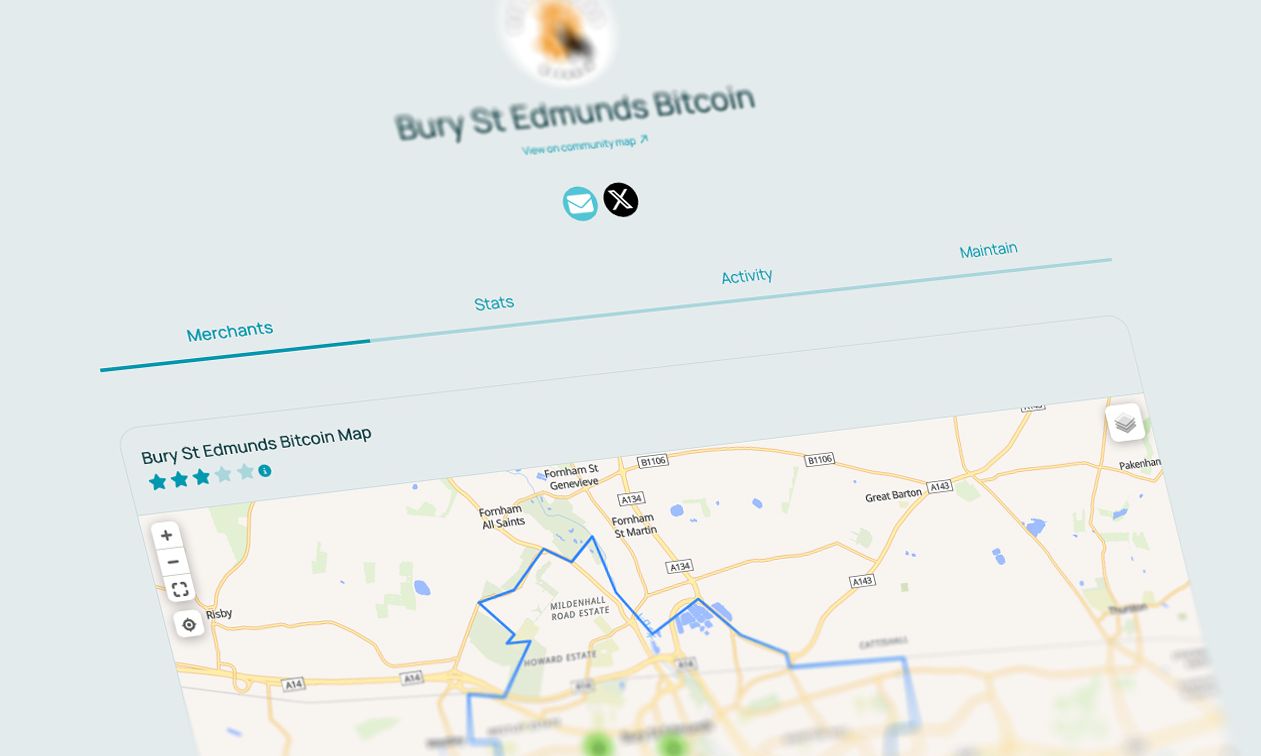 Bury St Edmunds has medieval links to the self-sovereignty embraced by today's users of Bitcoin..
Bury St Edmunds has medieval links to the self-sovereignty embraced by today's users of Bitcoin..
In the medieval heart of Bury St Edmunds, the abbey’s mint hammered out silver pennies, a testament to the town’s economic and cultural clout. This rare privilege, granted by royal charter, allowed the abbey to produce coins inscribed with “VILL SCIE DMV NDI” (Town of St Edmund), symbolising a localised authority over currency that fueled trade and pilgrimage. Moneyers like Morcere and Rauf, operating under the abbey’s aegis, crafted coins that circulated as far as the reaches of Anglo-Saxon and Norman England, embodying an early form of self-sovereignty. This decentralized minting, though tethered to royal oversight, gave Bury a degree of economic independence, enabling the community to shape its financial destiny within the constraints of feudal power. The abbey’s ability to mint coins mirrored the town’s broader autonomy, rooted in its spiritual significance as the resting place of St Edmund, the martyred king whose legacy drew wealth and influence to the region.
The self-sovereignty of Bury St Edmunds extended beyond coinage. The abbey wielded judicial and administrative powers, governing markets and resolving disputes, much like a proto-state within the kingdom. This local governance fostered a sense of communal identity and resilience, qualities that resonate with Bitcoin’s ethos. Bitcoin users, holding private keys to their wallets, exercise direct control over their wealth, free from seizure or censorship by centralised powers—a digital echo of Bury’s medieval defiance of overreach. The town’s history of balancing ecclesiastical privilege with royal loyalty parallels Bitcoin’s tension with modern financial systems, where users navigate regulatory pressures while championing financial freedom.
Yet, Bury’s mint also highlights the limits of localized sovereignty. By 1279, Edward I’s coinage reforms centralized minting in London and Canterbury, shuttering Bury’s operations and underscoring the fragility of regional autonomy against centralized power. Similarly, Bitcoin faces challenges from governments seeking to regulate or suppress it, yet its decentralized nature—lacking a single point of failure—makes it resilient, unlike Bury’s mint, which bowed to royal consolidation. The cryptographic security of Bitcoin, akin to the unique dies used by Bury’s moneyers, ensures authenticity and trust, but on a scale that transcends physical borders.
In Bury St Edmunds, the legacy of self-sovereignty endures in its historic streets and the coins unearthed by archaeologists, each penny a relic of a community that once minted its own future. Bitcoin carries this torch forward, offering a decentralized vision of financial independence that echoes Bury’s past. Just as the abbey’s coins bore the name of St Edmund, Bitcoin’s blockchain carries the weight of a new ideology—one where individuals, not institutions, hold the keys to their economic destiny, forging a modern saga of sovereignty rooted in code rather than silver.
To find an up to date list of places accepting Bitcoin as payment in Bury St Edmunds please check BTC Map.
Innovators in the town include:

